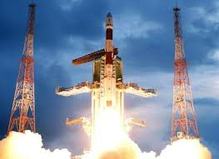 India has successfully launched its first ever moon mission on Wednesday. The Chandrayaan-I, an unmanned lunar exploration mission that includes an impactor and a lunar orbiter, was launched by the Indian Space Research Organisation (ISRO), which is the national space agency of India.
This successful mission has been a great ego-boost for the country. “It is a proud moment for us”, Kapil Sibal, the minister of Science and Technology said.
Some have raised questions on the country’s logic for spending $80 million in this scientific quest despite the country’s poverty. “It is not a question of whether we can afford it; it's whether we can afford to ignore it”, Dr K. Kasturirangan, ISRO’s chairperson said. He pointed out that $80 million is a comparatively low budget for this type of mission. “And the returns, in terms of the science... the technology, inspiration, stature, prospects for international cooperation... are immense”, Kasturirangan added.
The mission is believed to strengthen the country’s standing in the sector of commercial satellite launch and provide the ISRO with worthwhile experience in developing hi-tech spacecraft, more sophisticated remote navigation technology, and improved rocketry.
ISRO programmes have focused generally on the development in weather forecasting, educational broadcasts, communications, and launching satellites for resource mapping and landscape.
Chandrayaan-I takes the space programme of India to a new edge. “This is really a gear shift in a sense. Chandrayaan-I is a purely scientific, exploratory mission”, said Subhadra Menon, who authored the book chronicling the lunar mission’s history.
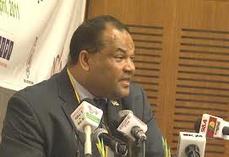 _The government of Nairobi will be preparing the guidelines on handling applications which are genetically modified. The scheme is done by the government as their first step in advancing the country’s production in agriculture through biotechnology.
Professor Shaukat Abdulrazak, National Council for Science and Technology’s head, had revealed that a strategy paper regarding how technology will benefit the people will be released on Thursday. According to him, the paper will be released by the Ministry of Higher Education, Science and Technology.
Last Monday, William Ruto, agriculture minister, assured the public that the Biosafety Bill will be passed and be eventually implemented. According to a speech released by Ruto "We have done enough lobbying to ensure that this time the Bill is passed”. He also added, "My desire is for all African countries to adopt an enabling policy for the development and application of biotechnology. This will fast-track the integration of Africa in the global bioeconomy.”
The decision of Ruto to use biotechnology has received the support of the African Union just yesterday. Ms. Rhoda Tumusiime, member of the African Union, had also admitted that the Assembly of the African Heads of State and the Government is also in favour of the adoption of genetic engineering. According to her, "This indicates the commitment by African leaders that GM technology may as well be one of the tools that will resolve the continent's agricultural constraints.”
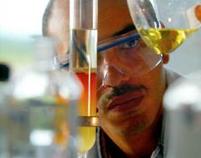 A £100M government fund is set to be released for UK’s fundamental areas of scientific research—future communications, green energy, and new materials. More than 76 development and research projects covering eight priority areas in technology will share the money.
The funds have been made available through the efforts of the Technology Strategy Board. Since it was formed in 2004, the board has funded over 700 projects amounting to £1B.
Studies in business competitiveness, green energy, and healthcare will be greatly benefited. Priorities include works on advanced cell therapies intended to treat wounds and innovations that will allow patients suffering from chronic conditions to be monitored at home.
Environmental priorities include the enhanced system that will maximise small-scale energy production, the technology intended to provide more efficient lighting for shop fronts, and enhanced materials intended for wave and wind farms.
"New research in these important eight key technology areas will make a real difference [in] the economy and [in] our lives. Our work on innovation will help businesses to succeed and improve public services, [and] meet the challenges of the 21st century and enhance people's life chances," said John Denham, secretary of the Innovation, Universities and Skills department.
The Science Council, which represents the professionals and scientific bodies of the United Kingdom, welcomed the newest development. Diana Garnham, the council’s chief executive, said that the eight target areas cover most of the areas in mathematics, technology, engineering, and science.
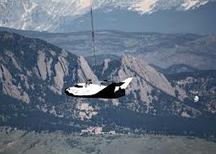 National Aeronautics and Space Administration (NASA) granted a contract, which would bring the cargo in the International Space Station, to Space Exploration Technologies.
The other contract was awarded to Dulles, a Virginia-based Orbital Sciences Corporation.
According to NASA, the two private industries were tasked to deliver supplies in the orbital outpost after the US shuttle fleet retired in 2010.
SpaceX's contract is good for 12 flights worth $1.6 billion US, while the Orbital have eight flights worth $1.9 billion US. The two contracts call for at least 20 tonnes in the cargo mass that must be delivered in the space station.
Orbital and SpaceX won contracts in a third bidder, consortium which was called PlanetSpace and it included the three NASA primary contractors -- Alliant Techsystems, Lockheed Martin and Boeing.
The SpaceX is considered as a new player in the space exploration company, and it successfully completed its first launch in a commercial rocket, the Falcon 1. Falcon 1 was the very first of low cost launch vehicles worth only $7.9 million US each. The company is anticipated to have trips in the space station with the other rocket called Falcon 9.
The Orbital is a more established and famous industry to the Canadians because it was the former owner of Canadarm technology. Orbital was the owner of MacDonald, Associates Ltd. and Dettwiler when it bought Spar Aerospace Ltd’s space robotics in 1999.
 Michael Griffin, NASA Administrator told a congressional supervision panel that China’s surging space plan could introduce moon explorers before Americans make a lunar come back.
Griffin presented before the House Science and Technology Committee the cost estimation at a budget hearing. The panel presented a two-party help for a boost in payments on Orion moonship of NASA that is falling behind schedule, including aeronautical research and unmanned science projects.
Funding woes forced the first trip of Orion of NASA back to March 2015; a six-month glide that provoked a series of queries from Rep. Ken Calvert, R-Calif., if the US can evade its control in space to China.
Griffin, who travelled some of the space installations of China and met with top engineers and scientists, informed the board that China, with its stable economy, is able of a ‘come-from-behind’ lunar hall.
“I cannot speculate and won’t speculate on what China’s intensions are. I just don’t know that”, said Griffin. He also stated “As a matter of technical capability and political will, if the Chinese choose to do so, they can mount a lunar mission within a reasonable number of years, say a decade”.
Just to be confident that he listened right, Calvert asked the chief of space agency if China’s explorers could arrive at the moon before 2020—the time that President Bush led NASA to attain three years ago.
“Of course, yes sir. It’s possible”, Griffin responded. “They could be there before we return.”
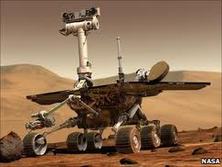 According to NASA, technical problems have forced them to delay for about two years the launching of a landmark mission to Mars, which was scheduled to take off next year.
"We won’t be ready to launch Mars Science Lab by the hoped-for date next year", NASA administrator Michael Griffin said. "Because of a number of factors that need to be addressed, we’re slipping the launch to 2011".
The delay of the mission from its scheduled launch will add approximately US$400 million in launching the Science Laboratory Project to Mars, which aims to study whether there’s microbial life that exists in the planet, including their possible existence today.
"I’ve full confidence in the JPL team to be able to work through the difficulties, but we've determined that trying for '09 would require us to assume too much risk", Griffin said.
Ed Weiler, the associate administrator of NASA, says that the delay is necessary and it allows them to resolve of any other remaining technical malfunctions, proper and careful checking of the system.
"Failure isn’t an option on this mission. The science is too important and the investment of American taxpayer dollars compels us to be absolutely certain that we’ve done everything possible to ensure the success of this flagship planetary mission", Griffin said.
The major reason for delaying the launching of the mission were unsolved problems with the actuator motors, which according to NASA, will help carry the most highly developed suite of mechanisms significant for scientific research on the planet.
 _Hydro, a global supplier of aluminium products, with activities in solar power and hydropower, is trying to expand its presence in Qatar, particularly in research and development, with an aim to help promote aluminium in the Middle East.
An integrated aluminium company with a global presence, Hydro, which forayed into Qatar Science & Technology Park (QSTP) with a 45 square-metre ‘novice’ office, signed a new contract to expand the space to 500 square metres.
Alongside Hydro’s strong involvement in the Qatalum aluminium plant that is now being constructed in Mesaieed, near to Doha, this development is described as a big step for the company’s research and development presence in Qatar.
Senior Vice President Tormod Bjork said, “The building industry in Qatar can benefit from the competence Hydro building system possesses”.
The sun, humidity, and the heat are intense in Qatar. This gives opportunities for Hydro as an inventor and producer of building systems solutions and for aluminium as a metal, Bjork said. He also pointed out that the Tornado Tower is the new project where the company supplied façade systems.
The Hydro official also observed that many of the buildings being constructed in Doha have not yet “seen the light” of utilising modern aluminium.
Bjork emphasised that the current market condition for aluminium has changed the ramp-up profile of Hydro at its facility at the QSTP.
“However, we are preparing for the next steps and we are now looking into establishing lab facilities and increasing our presence here”, Bjork added.
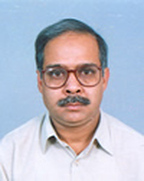 _VANIYAMBADI – On Monday, Department of Science and Technology (DST), New Delhi, Adviser A.Mukhopadhyay said that education and research in the area of science in particular has been passing across a bad stage owing to unavailability of proper facilities.
A national seminar on ‘Emerging Trends in Analytical Techniques’ as well as DST, Post Graduate sponsored lab and Research Department of Chemistry, Islamiah College, Vaniyambadi, A.Mukhopadhyay said availability of good students who could practise science as a career was also a matter of concern.
Furthermore, he said that if India hoped to stay at the forefront of science in the academic sector, it is important to strengthen its science and technology infrastructure.
Aside from non-availability of students to engage science, quality and uniformity of education was a matter of concern, though there were a total of 14,000 colleges and 300 universities in the country.
Through the DST, the central government adopted the task to strengthen the facilities for science education and research. About Rs.750 crore were spent by the DST in this endeavour to enhance postgraduate teaching and research. To encourage million young minds for research particularly in science education and research, DST is planning to launch another innovative programme.
According to the Regional Joint Director of Collegiate Education, Vellore Region, C.Velusamy, it is hard for the rural college staff to participate actively in research work because many facilities available in the city colleges were not accessible in the rural colleges.
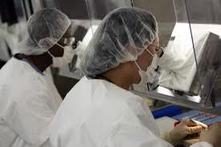 _A grant from the National Science Foundation was given to the College of Science and Technology at CMU to purchase technologically advanced testing equipments.
Daniel Chen, professor and chairperson for the industrial engineering technology college, together with Dru Wilson, a plastics technology professor, proposed the grant for the College to use.
Chen stated that the foundation had been receiving approximately 900 proposals, and had accepted about 200.
“It’s great for the university”, Wilson stated. “It promotes us and aids in student-based research”.
The $43,011 grant was equalised by the IET department for the college to purchase the Instron 5582, a machine used in testing the mechanical properties of different materials. The equipment could test the flexibility of materials by twisting, compressing, and bending them.
The testing equipment was being utilised in a small number of plastics laboratory classes. But students could use it for their research. They could conduct their tests and researches, instead of using computer simulated experiments.
Chen stated that the Instron was commonly used in industry.
“Most manufacturing facilities require the equipment”, said Wilson.
He said that most industries wanted to know the characteristics and properties of the materials they used when producing a new product. Wilson also stated that it would be important to select the right materials, when producing new products to determine if it would hold up under specific conditions.
|









 RSS Feed
RSS Feed